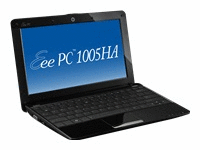
The Latitude XT2 is Dell's multitouch-enabled business convertible-notebook that now includes Windows 7. The XT2 starts at $1,909 and offers a very thin and lightweight business-rugged chassis with an attractive brushed-metal finish. In this review we find out if the XT2's system performance or multitouch support has improved under Windows 7.
Build and Design
The Dell Latitude XT2 has a very professional or industrial appearance with an all dark-grey design, sharp lines and edges, and even exposed screws. dell latitude-e4300 This notebook is definitely not targeted towards those looking for the next designer laptop. Instead, it is aimed squarely at those who just want to get down to business. The brushed metal surfaces are actually specially painted covers that give the look of metal but with the ease of maintenance that paint gives. The finish resists smudges and is much easier to wipe clean than most brushed metal exteriors. If it was painted matte black and had a Lenovo logo printed on it, you would swear it was a ThinkPad.
I personally love the side profile of the Latitude XT2, which is almost perfectly square at all corners. It has no sloped surfaces, no rounded sides, and sits very low to the desk surface. If you are carrying the tablet around in one arm it takes up such a small amount of space that you really don't mind holding it.
Compared to our previous review of the XT2 running Windows Vista or dell latitude z600.html, the same configuration running Windows 7 seems to have taken a performance hit. Under normal day-to-day activities the system doesn't feel up to speed even when compared to new thin and light notebooks. We feel some of this could be blamed on the 5400RPM 1.8" hard drive that is half the speed of common 2.5" 5400RPM drives. Opening up applications such as iTunes felt sluggish and lengthy boot times -- even with the standard bloatware removed- were still near one minute. This could be alleviated by configuring your XT2 with one of the SSD options, but that upgrade drives up the price. The Latitude XT2 also has the disadvantage of slower processor options compared to the Lenovo ThinkPad X200 Tablet, which negatively impacts the system performance of the XT2. Gaming performance was weak with the Intel X4500 integrated graphics, but this is true of almost all tablets on the market. HD movie playback was good for 720P and 1080P video, but multitasking in the background while watching an HD movie wouldn't be the best idea with the 1.4GHz processor.
Keyboard and Touchpad
The XT2 keyboard looks and feels great with slim keys and high visibility labeling. The layout is easy to follow with full-size primary keys and appropriately sized function keys. Compared to other notebooks the keys have a shallower throw, which is a side effect of the thin chassis. I actually found the keyboard to be quicker to type on compared to the ThinkPad X200, since the shorter throw means less travel before a key activates. The individual keys have no wiggle when you try to move the top of the key side to side.
The touchpad is an ALPS model running proprietary Dell software. Compared to the average Snypatics model it does show some minor lag, but it still feels responsive and easy to use. I think Dell could have gone with a larger touchpad surface, since the XT2 has enough space to incorporate it if you move the buttons more towards the lower edge of the palmrest. Dell also includes a pointing stick, which worked, but doesn't feel as fluid or responsive as other alternatives I have used.
Screen and Speakers
The 12.1" screen on the Dell Latitude XT2 looks great and is one of the better tablet screens I have seen in person. With the multiple touchscreen and pen input layers that tablets need over the actual display panel, most tablet screens look very hazy or cloudy compared to a standard notebook screen. The 1280 x 800 display on the XT2 looks slightly hazy compared to a normal display, but much nicer than the average tablet screen. One important feature of a tablet or slate screen is wide viewing angles for using the screen from multiple positions without having lots of color distortion. The display on the XT2 is above average in terms of horizontal viewing angles, but still suffers from some distortion when viewing the screen in landscape mode and pushing the screen back.




